
Types of waves
When we see the sunlight glitter on the ocean waves and hear the crash of the breakers, we perceive three examples of physical waves: water waves, sound and light. Each of these is a different type of wave.
Description of a wave
When we sit in a little boat floating on the sea, we can feel how wave crests alternate with wave troughs in the same place: the water surface moves up and down around a resting position. These oscillations can be faster or slower; wave crests and troughs can be of different heights and depths and their distance to each other can vary. These characteristics are common to all physical waves and are described by their frequency, amplitude and wavelength.
Mechanical waves
Sound waves, water waves and earthquake waves are mechanical waves. In order to propagate, they need matter (e.g. air, water, the Earth), which they set into oscillation. The matter is temporarily disturbed and then brought back into equilibrium by a restoring force, e.g. gravity in the case of water waves. The disturbance spreads as a wave because each oscillating material particle transfers its movement, i.e. its energy, to its neighbouring particles.
Surface waves
Surface waves propagate along surfaces by setting them into oscillation. In the case of water waves, the water surface gets disturbed. Water waves usually originate from wind and storms and involve only the upper parts of the water column. Tsunamis, however, encompass the entire water column, all the way to the bottom. – Surface waves also occur on the surface of the Earth. During an earthquake, it is usually the surface waves that cause the greatest damage.
Body waves
When we speak, we produce sound waves that propagate or spread out in all directions. That is why people around us can hear what we say. The sounds are transmitted as pressure waves, i.e. the air is compressed and expanded in the direction of the sound’s propagation. The stronger this compression and expansion, the larger the amplitude of the sound waves, i.e., the louder the sound. The faster compression and expansion alternate, the higher the frequency, i.e., the higher the pitch. Our ears can only hear sounds in a certain frequency range; lower frequencies are called infrasound and higher frequencies are called ultrasound.
Pressure waves can propagate not only in air, but also in liquids and solids. That is why we can hear in water and through walls. Pressure waves can also travel through solid ground. One such wave is the fastest earthquake wave, the P wave (P for pressure or primary).
Whereas in air and water only pressure waves are possible, in solids you can also find shear waves. In these waves, the particles oscillate perpendicularly to the direction of propagation. During an earthquake, these shear waves are generated at the same time as the pressure waves and also propagate in all directions. They are slower than the P waves and the second fastest earthquake waves. They are called S waves (S for shear or secondary).

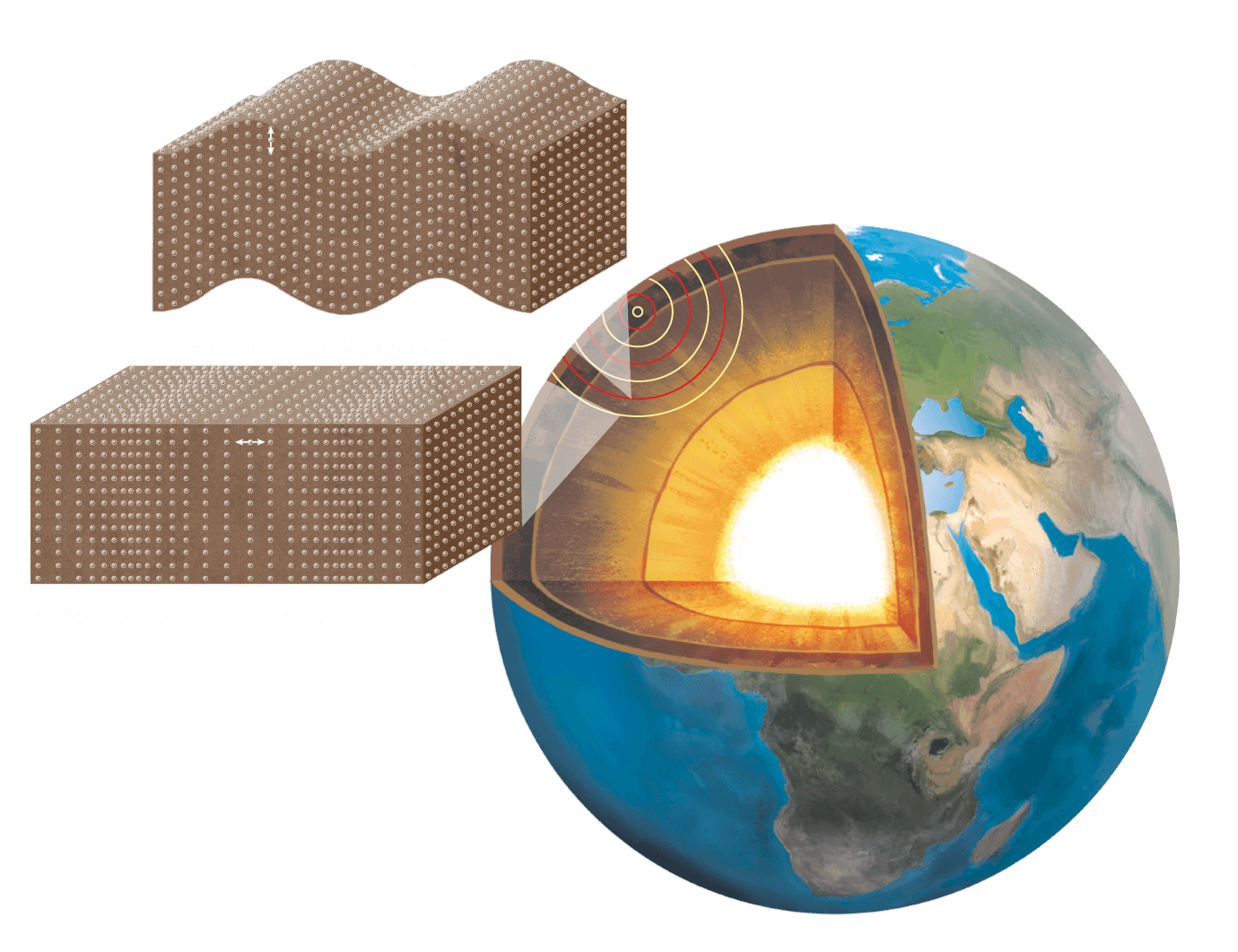
Electromagnetic waves
In electromagnetic waves such as light, it is electromagnetic fields that oscillate. These waves can propagate through matter as well as through a vacuum. The oscillations are generated by accelerated charged particles (protons, electrons) which disturb the surrounding electromagnetic fields. The disturbance propagates in all directions as an electromagnetic wave oscillating perpendicularly to the direction of propagation.
The higher the acceleration of the particle, the stronger the oscillation of the field and the larger the amplitude of the wave. In the case of visible light, this means that it is brighter. The faster the acceleration of the particle changes, the faster the oscillation of the field and the higher the frequency of the wave. For visible light, this means it has a different colour. The frequency range of electromagnetic waves is called the electromagnetic spectrum.
We ourselves are also constantly emitting electromagnetic waves in the form of heat (infrared radiation). This is because charged particles vibrate in our bodies. The warmer something is, the faster its particles vibrate and the higher the frequency of the electromagnetic waves that are emitted. When something is so hot that part of the radiation produced is within the range visible to us, it glows.
Radiation
The term radiation is used for electromagnetic waves that have high frequency and therefore high energy, such as X-rays and gamma rays. However, there is also particle radiation, which transports energy in the form of particles (matter). This includes radioactive alpha and beta particles as well as cosmic radiation. But no matter if it is waves or particles: radiation with more energy than ultraviolet or UV radiation is ionising, i.e. it can knock electrons out of atoms and can therefore be harmful to living beings.
Wave-particle duality
As with all waves, the propagation of electromagnetic waves transports energy. This means that the energy is distributed evenly wherever the wave propagates. However, experiments have shown that the energy of electromagnetic waves also behaves like particles and that it consists of individual massless energy bundles (light particles or photons). This means that energy is not distributed evenly, but can only be found where there are photons. In the end, both notions are valid at the same time: energy is both distributed evenly and bundled in photons.
Similarly, material particles can behave like waves: in everyday life we make the experience that objects, which are made up of particles, have clearly defined boundaries and therefore the same applies to their energy. In experiments, however, we observe that the energy is also distributed evenly – as in a wave.
Thus, waves are also particles and particles are also waves. This wave-particle duality forms the basis of quantum physics, which succeeds in describing reality very accurately in mathematical terms. However, this is where descriptive terms like ‘wave’ and ‘particle’ reach the limits of their usefulness.
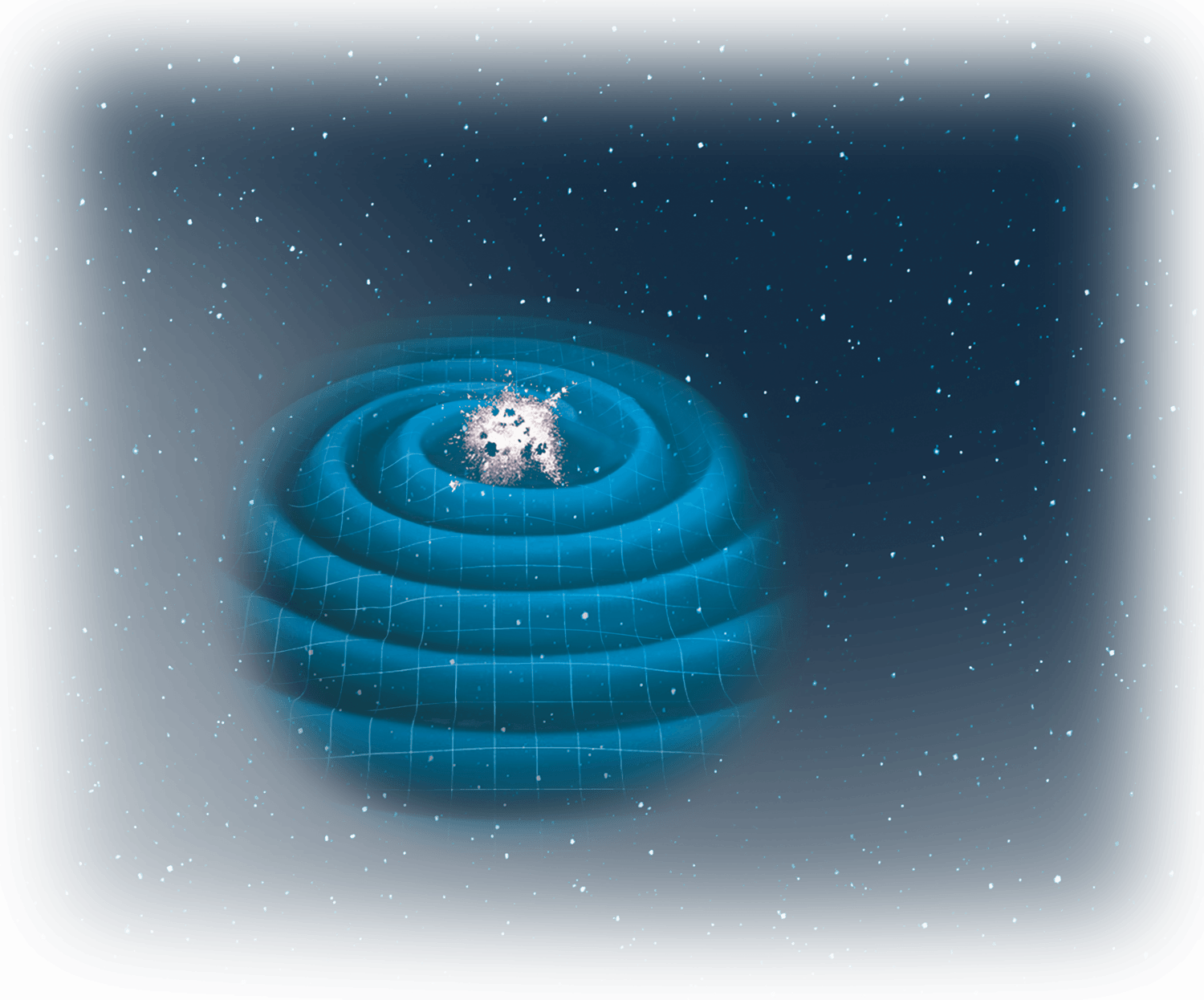
Gravitational waves
Gravitational waves squeeze and stretch the universe. This means that they cause space-time – i.e. the three-dimensional space and time – to oscillate. In the process, objects such as planets are temporarily deformed and the distances between them change. Gravitational waves are generated when masses accelerate, for example when black holes collide: the faster the masses revolve around each other and come closer together, the higher the frequency of the gravitational waves, i.e., the faster the alternation between compression and expansion. The greater the masses, the larger the amplitude of the waves and the stronger the deformation of space-time. Gravitational waves typically have very long wavelengths. – We also generate gravitational waves with our movements. But these are so tiny that they cannot be measured.